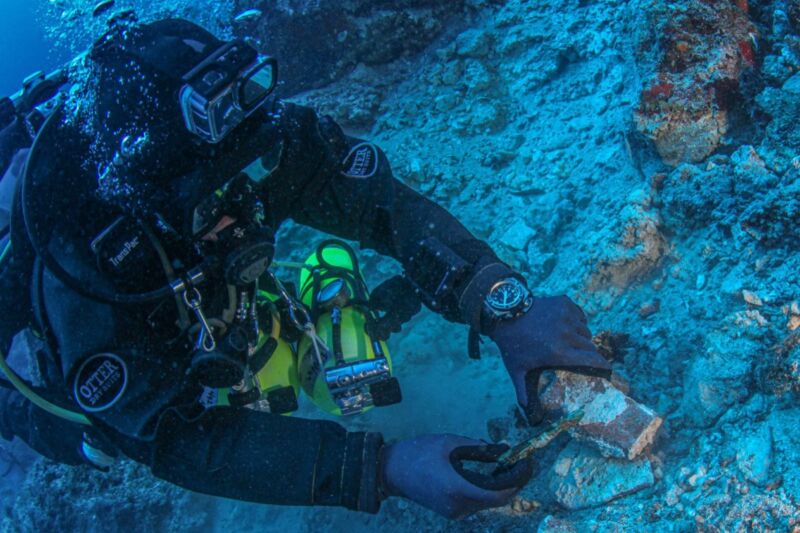Divers recovered giant head of Hercules from Antikythera shipwreck in Greece

Enlarge / A diver with the Return to Antikythera project carefully excavates an artifact. (credit: Nikos Giannoulakis/Return to Antikythera)
The so-called Antikythera mechanism, recovered from the wreckage of an ancient cargo ship off the coast of Antikythera Island in Greece, might be the world's oldest analog computer. The mystery surrounding its purpose and origin continues to fascinate scientists and enthusiasts alike to this day. But it's not the only treasure salvaged from that Antikythera wreck. An ongoing underwater archaeological project most recently recovered a large marble head of a bearded male figure believed to be part of a statue of Hercules. Divers also recovered a marble plinth with the lower legs of another statue, two human teeth, and several pieces of the cargo ship's equipment.
As we've previously reported, in 1900, a Greek sponge diver named Elias Stadiatis discovered the wreck, which was apparently surrounded by rotting corpses on the sea floor. The captain, Dimitrios Kondos, didn't believe Elias at first and thought the nitrogen in his breathing mix had affected the diver's senses. So Kondos dove down to the site himself, emerging with an arm from a bronze statue.
Kondos and his crew had recovered all kinds of artifacts from the shipwreck by mid-1901, including 36 marble sculptures (representing Hercules, Ulysses, Diomedes, Hermes, and Apollo, among others); a bronze statue dubbed "The Philosopher" (circa 340 BCE); a bronze lyre; pieces of glasswork; and three marble horse statues. Along with the Antikythera mechanism, these precious artifacts are now housed in the National Archaeological Museum of Athens.
Read 7 remaining paragraphs | Comments